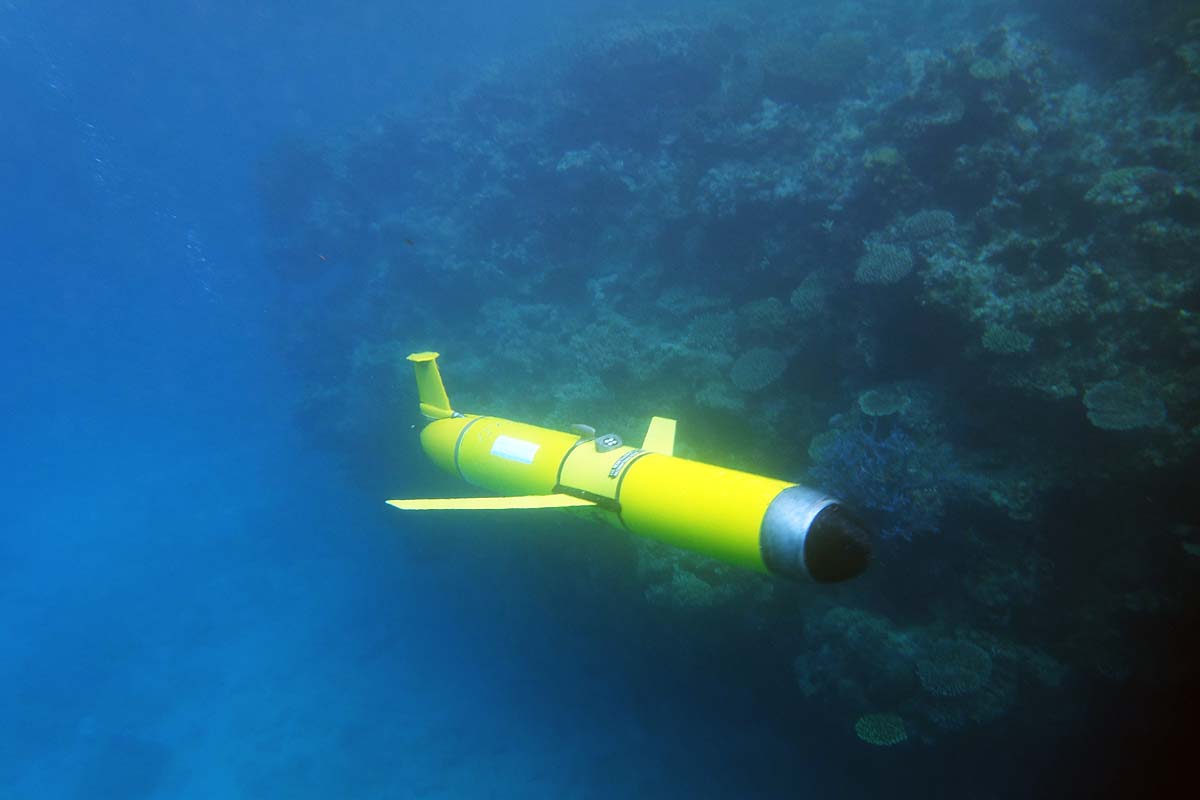IMOS is responding to the high ocean temperatures on the GBR by mobilising our glider fleet into regions of greatest concern.
Sea surface temperatures on the Great Barrier Reef (GBR) south of latitude 15°S have been close to average in the first half of summer but began increasing in mid-January, and have been above the 90th percentile since February 10 (as can be seen on the IMOS SSTAARS map on the IMOS OceanCurrent website). Mid-February is the danger period for coral bleaching as it is the time of year when water temperatures are usually at their maximum.
Temperature readings from marine weather stations operated by the Australian Institute of Marine Science (AIMS) have also shown that sea surface temperatures throughout most of the reef are at 1 to 2.5°C above average.
AIMS is working closely with the Great Barrier Reef Marine Park Authority (GBRMPA) and specialists from other national and international agencies to ensure the most comprehensive understanding of conditions on the Reef are made available.
“Our knowledge and long-term understanding of northern Australian waters tell us warming oceans place enormous pressure on the Reef’s ecology. If heatwave conditions persist or worsen, we can expect corals to exhibit stress and experience some level of regional bleaching,” says AIMS Oceanographer Craig Steinberg.
Mr Steinberg says they received temperature data from satellites, AIMS’ marine weather stations, and the IMOS autonomous ocean glider, to monitor temperatures in real time. A network of more than 170 electronic temperature loggers is also deployed across the Reef.
“We have redeployed an Integrated Marine Observing System (IMOS) underwater glider to areas of concern in the waters north-east of Townsville.”
“With its on-board sensors, the glider provides our scientists with information about ocean properties at different depths of the water column including temperature and light, to help explain any observed levels of coral bleaching.”
“Knowing how deep the warm surface layer is, can help determine the depth corals are likely to experience heat stress.”
In water technology is critical to understanding current conditions and potential bleaching of the Great Barrier Reef. For example, ocean gliders operated by the Integrated Marine Observing System are being deployed specifically to monitor conditions around the reef and provide information about water temperature and conditions during this critical time.
“IMOS is uniquely placed to provide critical operational awareness of water temperature below the surface of the ocean and in cloudy conditions, when satellites can no longer see the Reef. IMOS is a key element of our broader operational information gathering system which includes coral health checks by divers, aerial coral bleaching surveys and citizen scientists,” says Dr David Wachenfeld, Chief Scientist at the Great Barrier Reef Marine Park Authority.
All of the observations from the various platforms helps AIMS and GBRMPA understand marine heat phenomena and, given the vast size of the Great Barrier Reef, prioritise locations to observe. The observations together with scientific models can help scientists predict regions most at risk of bleaching.
AIMS Chief Executive Officer Dr Paul Hardisty said the underlying trend of ocean warming means there is increased stress on Australian reefs, and an increased likelihood of bleaching in any given year.
“This year, we have come close to a major bleaching event. We are still on the knife-edge. How the reef fares will depend on weather conditions over the next few weeks. Importantly, this is happening in a non El-Niño year,” Dr Hardisty says.
AIMS have noted that whilst cooler weather over the weekend has brought some relief, reducing the immediate likelihood of severe widespread bleaching, if clear skies and low wind conditions return, so will the risk of bleaching
Scientists at AIMS and GBRMPA will continue to closely monitor the situation on the Great Barrier Reef in the coming weeks, with weekly Reef Health updates posted on the GBRMPA website here.
Click here to read the full media release from AIMS.
